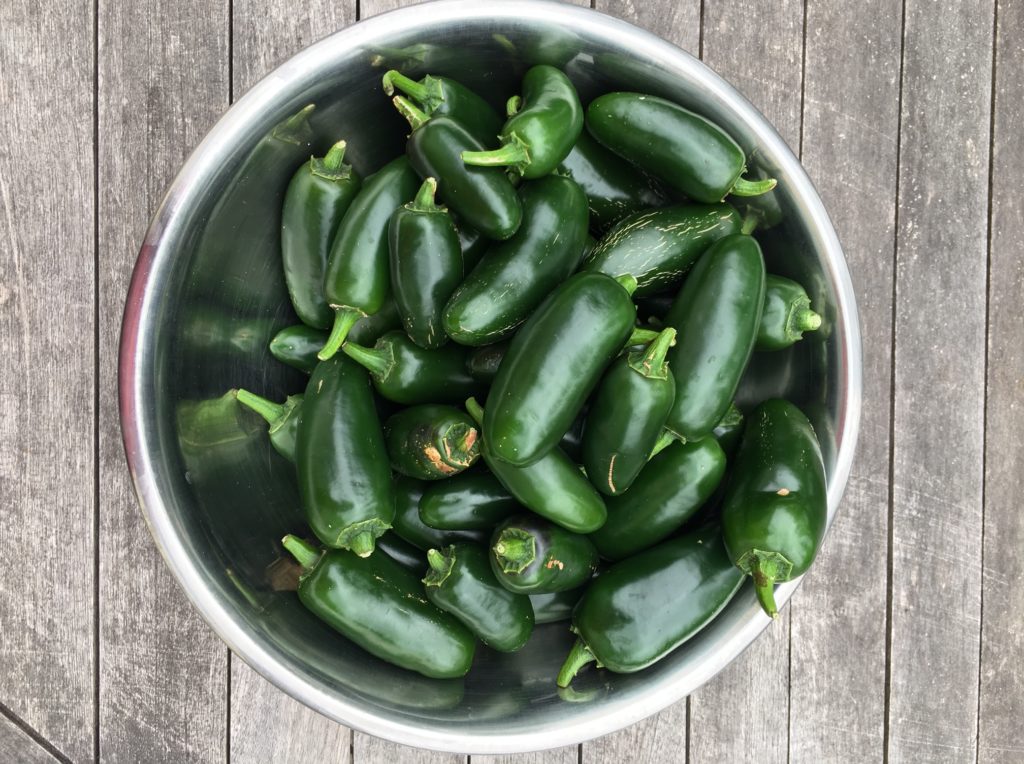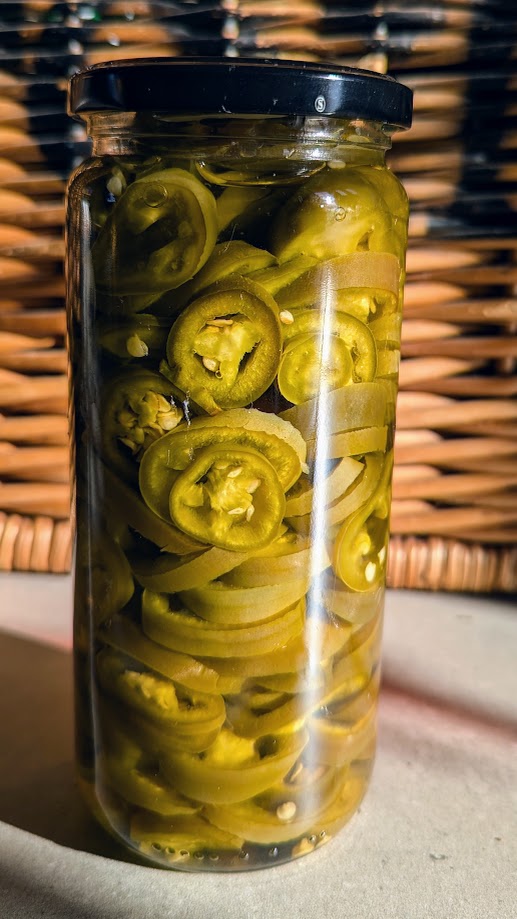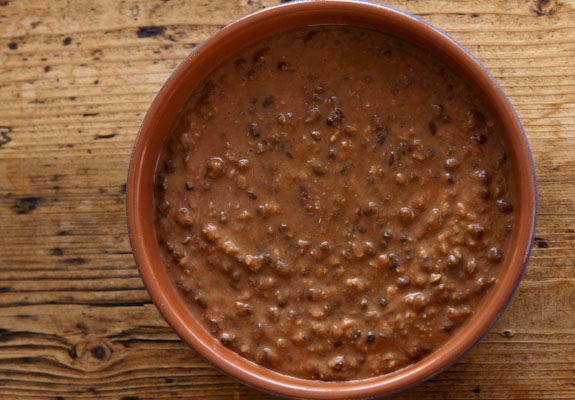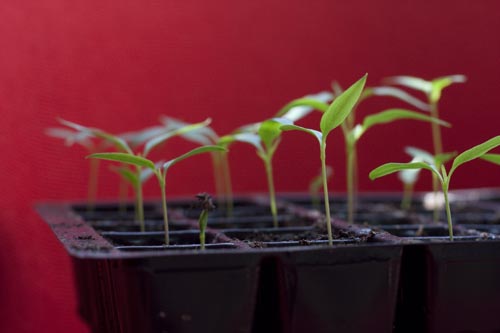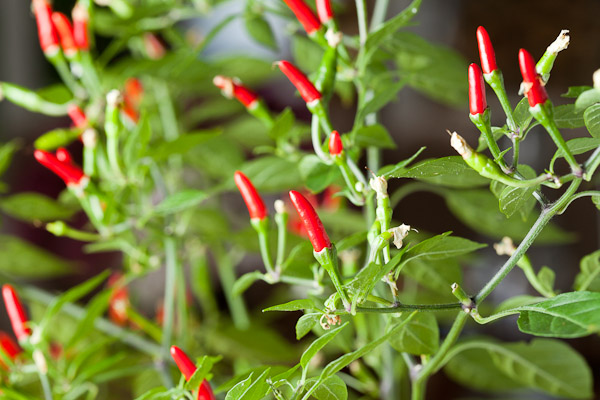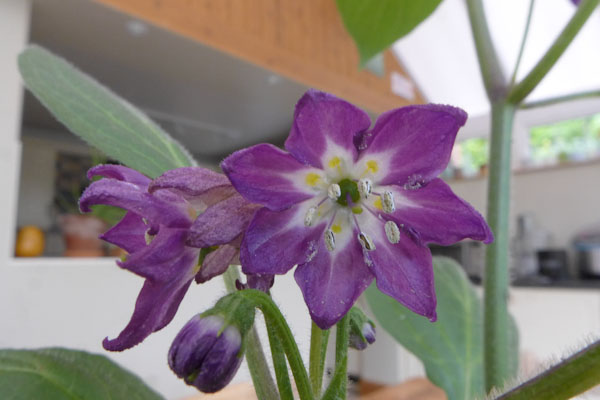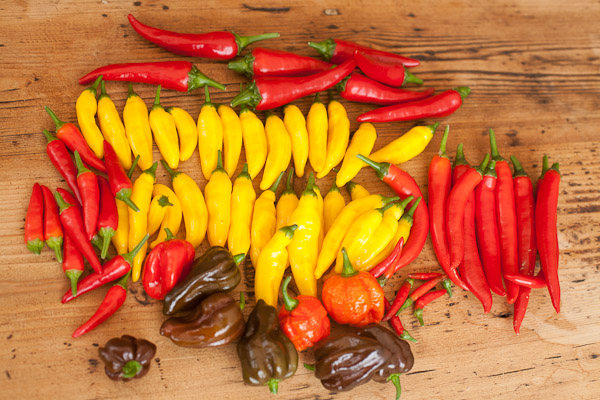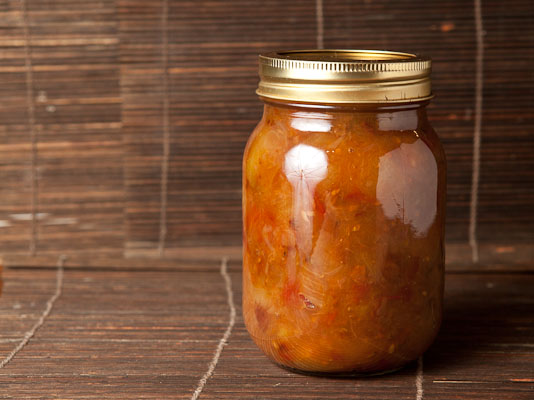Chilli plants (Capsicum species) are a popular and rewarding plant to grow, whether you are a seasoned gardener or a beginner. From fiery habaneros to milder jalapeños, growing your own chillies allows you to enjoy fresh, spicy ingredients straight from your garden anyime throughout the summer and autumn. This guide will cover everything you need to know to care for a chilli plant, from sowing seeds to harvesting.
1. Choose the Right Variety
Before you begin, it’s important to select the chilli plant variety you want to grow. There are hundreds of varieties to choose from, ranging in heat from very mild to extremely hot. Some common varieties include:
- Bell peppers (Capsicum annuum): Mild, sweet, and often used in salads.
- Jalapeños (Capsicum annuum): Mild to moderately hot, perfect for salsas and grilling.
- Habaneros (Capsicum chinense): Very hot, with a fruity flavor.
- Cayenne (Capsicum annuum): Moderately hot, often dried and ground into powder.
- Ghost peppers (Capsicum chinense): Extremely hot, for those who enjoy a serious heat challenge.
There are literally thousands of different verieties to choose from. We recomend trying some of the above as they tend to be easy to grow and quick to fruit. More exotic varieties can take longer to mature.
2. Starting from Seeds or Seedlings
Chilli plants can be grown either from seeds or purchased as seedlings from garden centres. Growing from seed gives you a wider variety of chillies to choose from, but it requires more time and patience. If you’re planting from seed, start the process indoors 8-12 weeks before the last frost in your area. Here in the UK, I tend to start my seeds off indoors in late January or February.
- Seed germination: Sow the seeds about 0.5 cm deep in seed trays filled with good-quality potting mix. Place the trays in a warm, sunny spot or under grow lights. Ideally cover them with a lid to help maintain humidity during germination. Chilli seeds typically take 7-14 days to germinate. Keep the soil consistently moist but not waterlogged.
- Transplanting seedlings: Once your seedlings have developed their first true leaves, they can be transplanted into larger pots or into the garden after the danger of frost has passed.
Related: Germinating chilli seeds
3. Soil Preparation and Potting
Chillies thrive in well-draining soil, rich in organic matter. Whether you are planting in pots or in the ground, make sure the soil is prepared properly.
- Soil mix: A mix of compost, peat moss, and perlite or sand works well for chilli plants. This mix will ensure proper drainage while retaining enough moisture for the plant’s roots.
- pH level: Chilli plants prefer slightly acidic to neutral soil with a pH between 6.0 and 7.0. You can test the soil pH using a soil testing kit, and if necessary, amend the soil by adding lime (to raise pH) or sulfur (to lower pH).
- Pot size: If you are growing chillies in containers, choose pots that are at least 12 inches in diameter for each plant to give the roots enough space to grow.
Related: Best Potting Medium for Chillies
4. Watering
Chilli plants need consistent moisture, but overwatering can lead to root rot and other issues. The key is to water deeply but allow the soil to dry slightly between waterings.
- Watering frequency: Water your chilli plants once the top inch of soil feels dry to the touch. In hot weather, this may mean watering daily, while cooler conditions may require watering every few days. Pay attention to the ambient temperatures.
- Avoid waterlogging: Ensure that your chilli plant pots have adequate drainage holes, and avoid letting the plants sit in standing water. Chilli plants hate having wet roots. If growing in the ground, raised beds can improve drainage in heavy soils.
- Avoid tap water: I have aways had good success with using saved rain water. If you do use tap water let it sit in a watering ccan for a few hours first. This allows some of the chlorine in the water to burn off.
Related: Watering tips for chilli plants
5. Sunlight Requirements
Chilli plants are sun-loving and need at least 6-8 hours of direct sunlight each day to thrive. The more light your plants get the more chillies they will produce. If you are growing indoors, place them near a sunny window and/or use grow lights to supplement natural sunlight.
- Positioning: If growing outdoors, choose a sunny, sheltered spot that receives full sun for most of the day. Avoid planting them in shaded areas, as this can stunt growth and reduce fruit production.
- Under Glass. Here in the UK it is best to grow chilli plants in a greenhouse or poly tunnel. This provides warmer temperatures and maximum natural light.
The only exception is when in your plants first few weeks of life. Young chilli seedlings can be scorched by too much direct sunlight. To avoid, start young seedlings off under grow lights or use indirectnatural light and gradually aclimatise them to more light as they get more established.
6. Fertilizing Chilli Plants
Chilli plants are heavy feeders, especially when they start producing flowers and fruit. To ensure a healthy plant and abundant harvest, fertilize regularly.
- Balanced fertilizer: During the growing stage, use a balanced fertilizer with equal amounts of nitrogen, phosphorus, and potassium (NPK 10-10-10 or similar). We highly recommend the excellent Chilli Focus.
- Boosting flowering and fruiting: Once the plant starts flowering, switch to a fertilizer with more phosphorus and potassium (e.g., NPK 5-10-10) to encourage fruit development.
- Organic options: If you prefer organic gardening, compost tea, fish emulsion, and seaweed extract are excellent natural fertilizers for chilli plants.
7. Pruning and Staking
Pruning your chilli plants can help them focus their energy on producing fruit rather than excess foliage. Staking may also be necessary for larger plants to prevent them from bending or breaking under the weight of the fruit.
- Pruning: When young, pinch off the growing tips of the plant once it reaches about 15-20cm in height. This will encourage bushier growth whic will increase the yield of the plant. Remove any damaged or yellowing leaves to improve air circulation.
- Staking: Use stakes or canes to support tall or heavy laden plants. Tie the main stem gently to the stake with soft twine or plant ties.
8. Pest and Disease Control
Chilli plants are susceptible to a few common pests and diseases, but with proper care, most of these problems can be managed.
- Common pests: Aphids, spider mites, and whiteflies are some of the pests that can attack chilli plants. Inspect your plants regularly for signs of infestation, and treat affected plants with insecticidal soap or neem oil if needed.
- Fungal diseases: Overwatering and poor air circulation can lead to fungal diseases like powdery mildew and root rot. Common signs of over watering are yellowing leaves and or brown spots on foliage. To prevent this do not over water your plants. If growing under glass ensure your plants get good air circulation, are spaced well apart. Finally be sure to keep your growing area clean and prune/remove any dead/dying leaves.
- Blossom end rot: This condition, caused by a calcium deficiency, leads to blackened, rotting spots on the fruit. Prevent this by maintaining consistent soil moisture and adding calcium to the soil if needed.
Related: Aphids on Chilli Plants
9. Pollination
Chilli plants are self-pollinating, however they may benefit from assistance, especially if grown indoors. We do this by ‘tickling’ open flowers with a small paint brush to transfer the pollen between flowers. Just be sure to clean the brush when moving between varieties to avoid cross pollination.
10. Harvesting
Chillies can be harvested at different stages, depending on the variety and your desired flavor.
Most chillies change color as they mature, becoming hotter and more flavorful.
- When to harvest: For a milder flavor, harvest green chillies. For a hotter and more developed flavor, wait until the chillies turn red, orange, or yellow, depending on the variety.
- How to harvest: Use sharp scissors or pruning shears to cut the chillies from the plant, leaving a short stem attached. Avoid pulling them off by hand, as this can damage the plant.
11. Storing and Preserving Chillies
Once harvested, chillies can be eaten fresh or preserved for later use.
- Storing fresh chillies: Store fresh chillies in the refrigerator for up to two weeks. For longer term storage, chillies can be frozen, dried, or pickled.
- Drying: Hang chillies in a well-ventilated area or use a food dehydrator to dry them as a chilli ristra. Once dried, they can be ground into chilli powder or stored whole in an airtight container.
- Chutney: One of our favourite ways to preserve chillies is to make this delicious chilli chutney recipe. It stores all year round and can be used in many different recies.
Related: Check out are chilli recipe archive for more ideas.
How to Care for a Chilli Plant – Conclusion
Caring for chilli plants requires a few key things to be right, such as well-draining soil, plenty of warmth and sunlight and moderate watering. If you get these things ight you should hopefully enjoy a successful harvest of chillies.
If you were wondering how to care for a chilli plant we hope you found the answers in this article. Feel free to add any other tips or tricks you know of for taking care of chilli plants in the comments below.
Love chilli plants? Find more chilli plant care tips and other tutorials in our archive.
